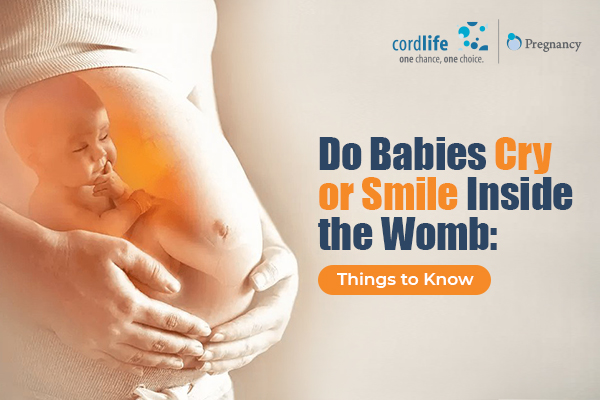Table of Contents
Pregnancy is a moment in your life, when you will undergo a lot of changes physically and emotionally. This moment is no doubt filled with challenges, but it is equally blissful and exciting. It’s fun for you to see your baby’s movement and response inside your womb. The scans show your baby is kicking, sucking, swallowing or listening to the sounds through an ultrasound scan. A 2015 study recorded a baby’s earliest response to sound in the womb in the 16th week of pregnancy. The study shows that the womb affects the foetus directly. Here, the baby moves and kicks during the third trimester, when spoken to or even at the slightest touch. Moreover, babies in utero can also urinate, move around, and do a somersault. Since the amniotic sac is there, it is difficult to understand whether a baby would or would not cry in the womb. Researchers have found some signs that would tell the baby would cry in the womb.
How to Identify the Crying of a Baby in the Womb?
The scientists are not absolutely sure about your baby’s crying in your womb. The babies inside may not cry like they cry outside. But, there is some evidence to prove the truth of the matter. A 2005 study identifies 5 states of a baby inside the womb. Out of the 5 states 4 are – staying actively awake, quietly asleep, quietly awake, and active state. (This undoubtedly indicates that your baby can cry in the womb). Scientists further discovered the fifth state to be crying. Your infant crying in your womb is a baby developing milestone.
When Do the Babies Start Crying in the Womb?
By the 20th week of your pregnancy the baby inside you can do a lot. The baby inside moves the jaws, opens the mouth, quivers the chin, extends the tongue, and swallow. A 2005 study claims that by this time, the baby inside you is also aware of his or her breathing movements. The same study shows, by the beginning of the 24th week, the baby inside produces crying sounds. He or she also responds to noises outside.
Why Does the Foetus Cry in the Womb?
You might think that the reason for your baby’s crying in your womb, might be sadness or in response to pain. But the infant inside you is practicing how to communicate with you after birth. Crying is basically his or her survival mechanism. In this way, your baby can let you know what he or she needs from inside. Scientists also identified displeasure, and grimace, as expressions of crying in unborn babies. Moreover, the baby recognises the outside stimuli. The little one inside reacts to the stimuli in several ways. One of them would be crying. Crying also indicates that the baby in your womb is growing up.
Why Do the Newborns Cry After Birth?
Newborn cries due to this sudden transition from the world inside to outside. He or she is slowly adapting to cold air and a new environment. So, that often makes him or her cry. Also that the baby’s respiratory and circulatory system are in proper order inside.
In your prenatal visits if you’re lucky you might even catch your baby’s smile in your womb during an ultrasound. In fact research has shown that if you feel relaxed and calm, the baby in your womb would feel so too. Thus you will be able to notice the smiling face of your baby. But, Smiling can be interpreted as a reflex. This is observed at 18 weeks.
Isn’t that interesting to know? Pregnancy indeed is the most fascinating moment of your life. Cherish every minute of it.
To know more about pregnancy and cord blood banking, visit our blog page.
